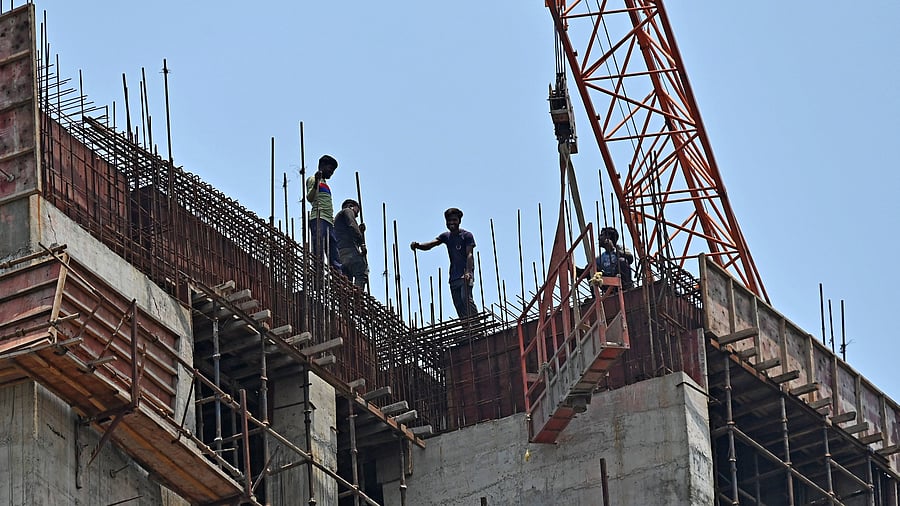
Workers at a construction site of a high-rise building in Bengaluru.
Credit: DH PHOTO/PUSHKAR V
Bengaluru: People aged under 25 years are most at risk of traumatic occupational injuries, causing them significant financial distress aggravated by limited insurance coverage, a recent study has found.
Published in the Indian Journal of Occupational and Environmental Medicine in its January-March 2025 issue, the study examined 148 occupational injury cases over six months through hospital records and direct telephonic interviews with patients at a tertiary care hospital in Bengaluru.
Of the total participants, 144 were men with a mean age of 30.6 years, working in several informal, labour-intensive sectors involving direct machinery interaction, including mining, construction, manufacturing, transport, cleaning, and the garments industry. Their interviews revealed that occupational injuries were highest among people aged under 25 years, identifying this age group as most vulnerable to traumatic injuries.
Employee negligence and poor working conditions were the top factors contributing to these injuries. The most common injuries were to the limbs, head, and eyes. Although nearly 69 per cent of those surveyed reported the availability of personal protective equipment (PPE), only 51.4 per cent said they actually used it.
About 43 per cent reported ‘catastrophic’ health expenditure, while only 36.5% of participants benefited from company credit coverage, and a mere 7.4% were covered by the Employees’ State Insurance (ESI) Scheme. Many participants asked for simplified insurance procedures and social security schemes.
Through the study, researchers underscored the need for targeted interventions to prevent and effectively manage occupational injuries, particularly in high-risk sectors. They recommended improving PPE kit availability and usage through enforcement and training, expanding insurance coverage to ease financial burdens, and raising awareness about social security schemes.
The study’s authors noted that India records at least 17 million non-fatal occupational injuries and 45,000 fatal ones annually, highlighting the scope and urgency of addressing the issue.
Dr Bobby Joseph, one of the authors, said, “Many of the participants were migrants. Most were people younger than 25 years, as they are the group actively seeking employment and likely to take up jobs posing greater health risks. This is, however, from one hospital where we see a lot of such injuries; there could be many more cases across Bengaluru, depending on where patients seek treatment based on affordability.”